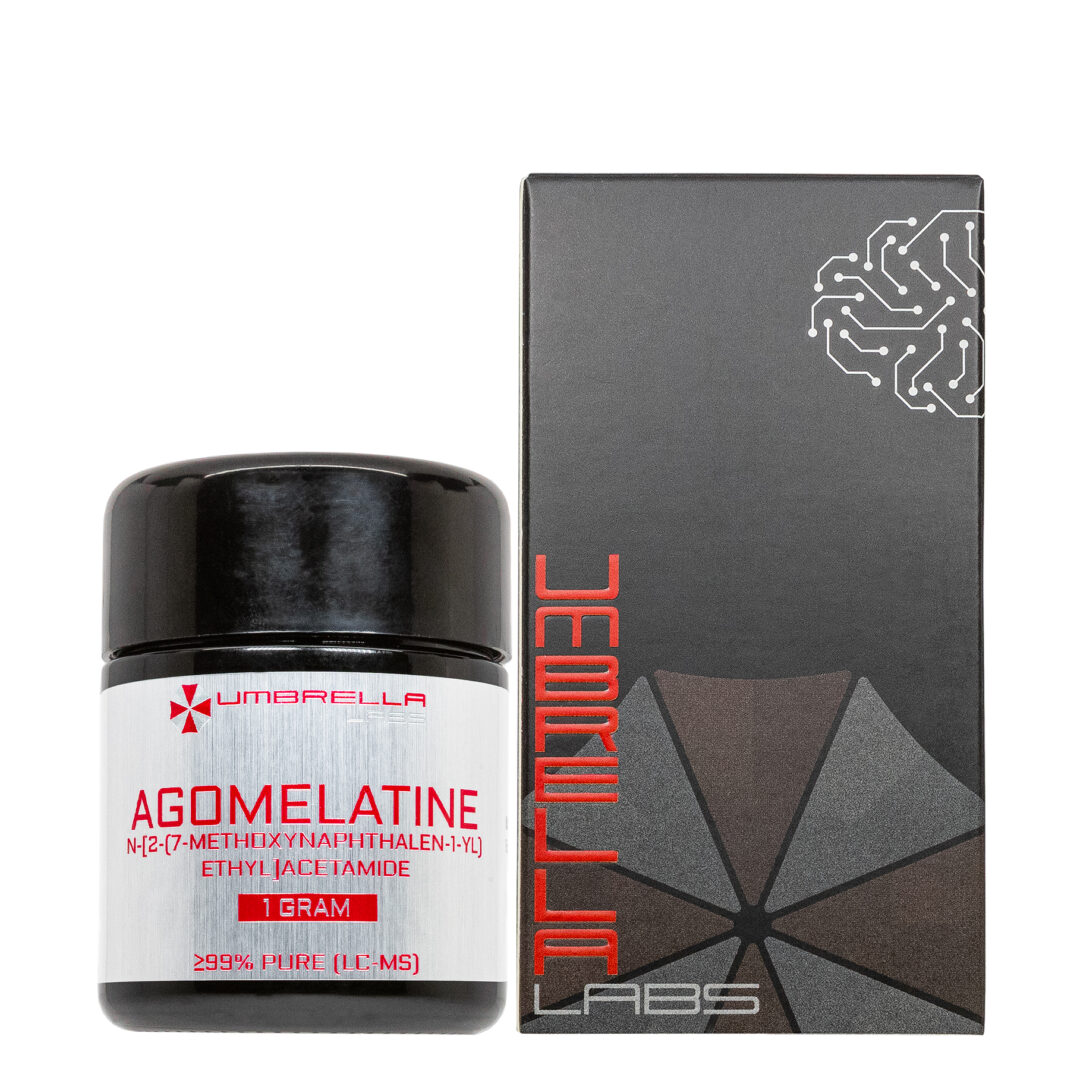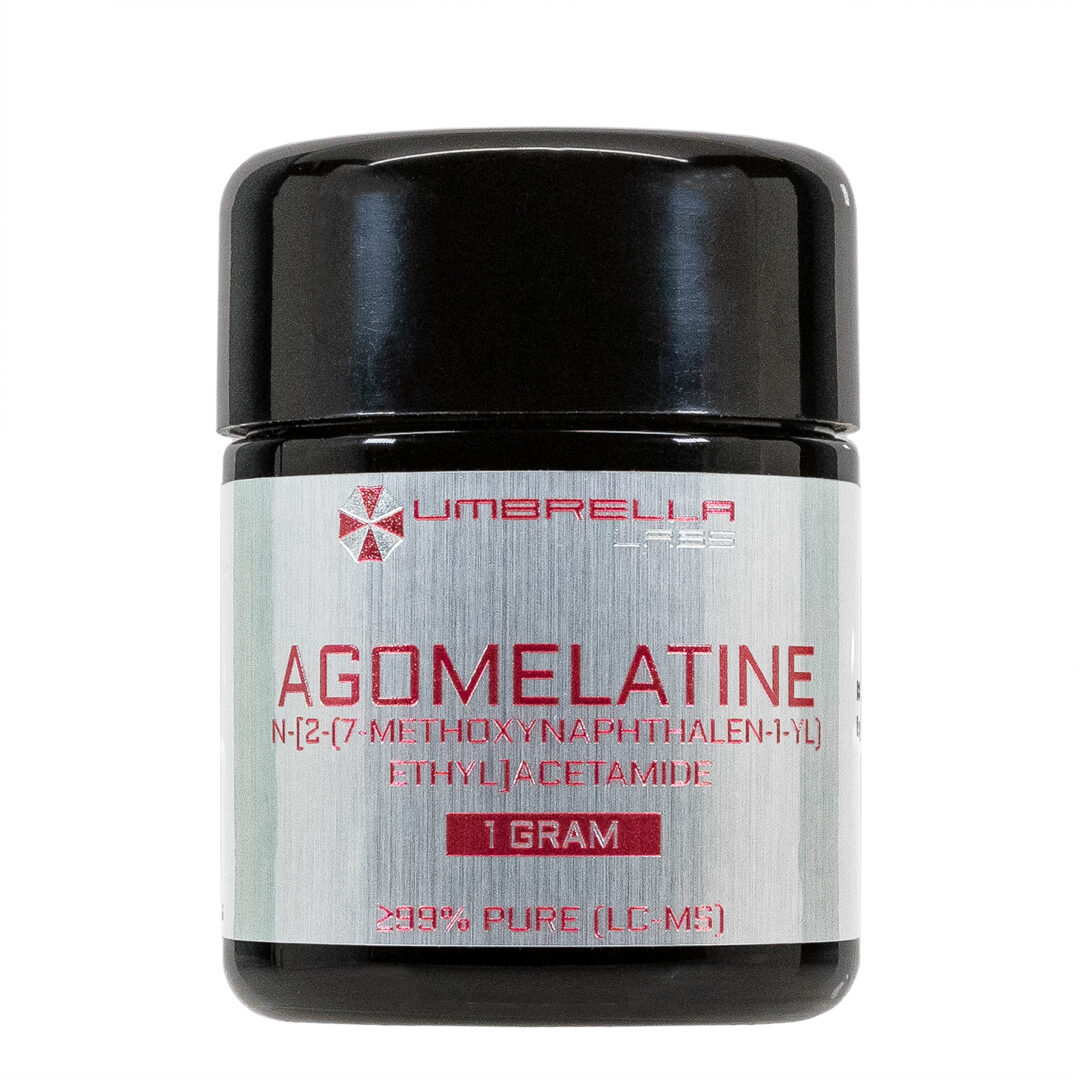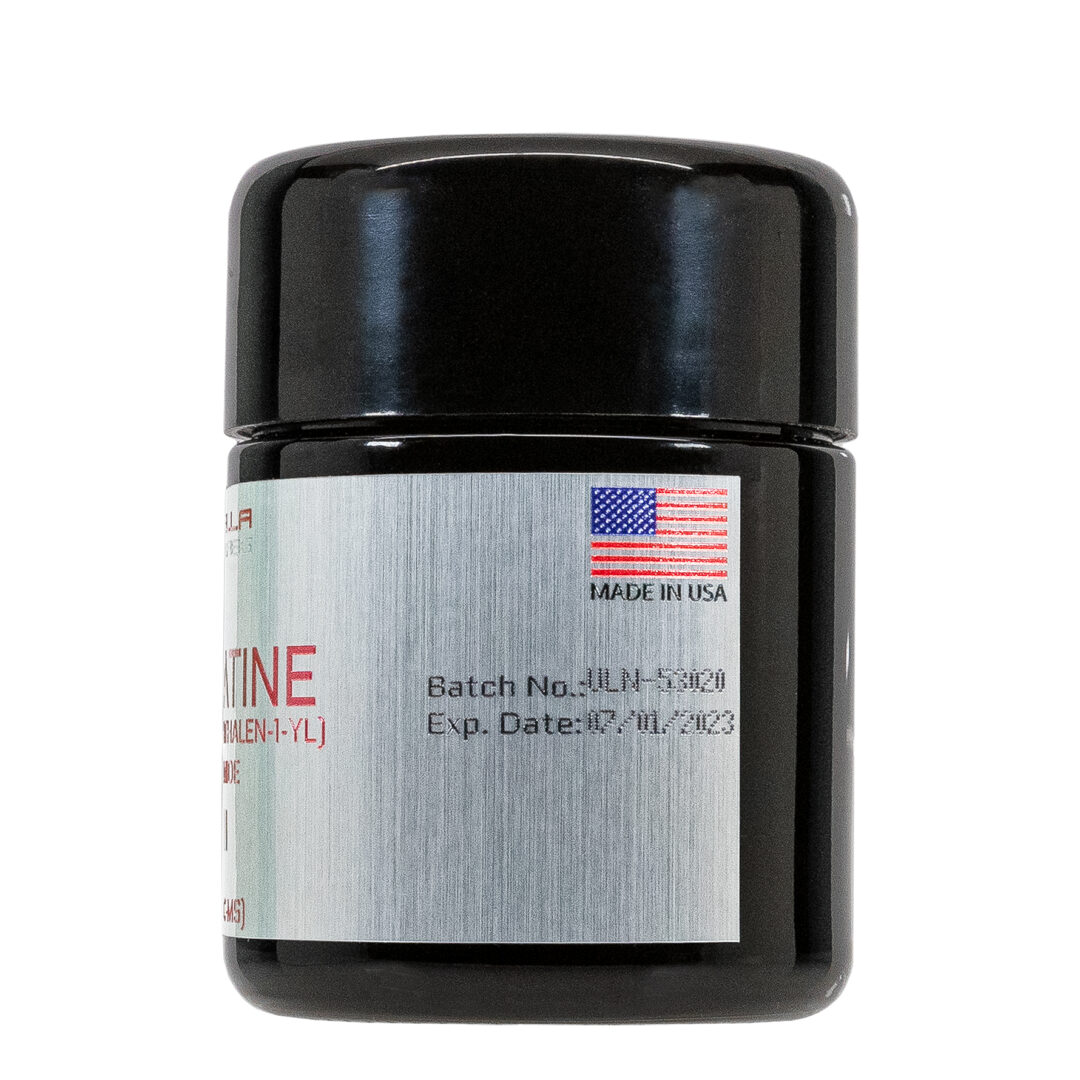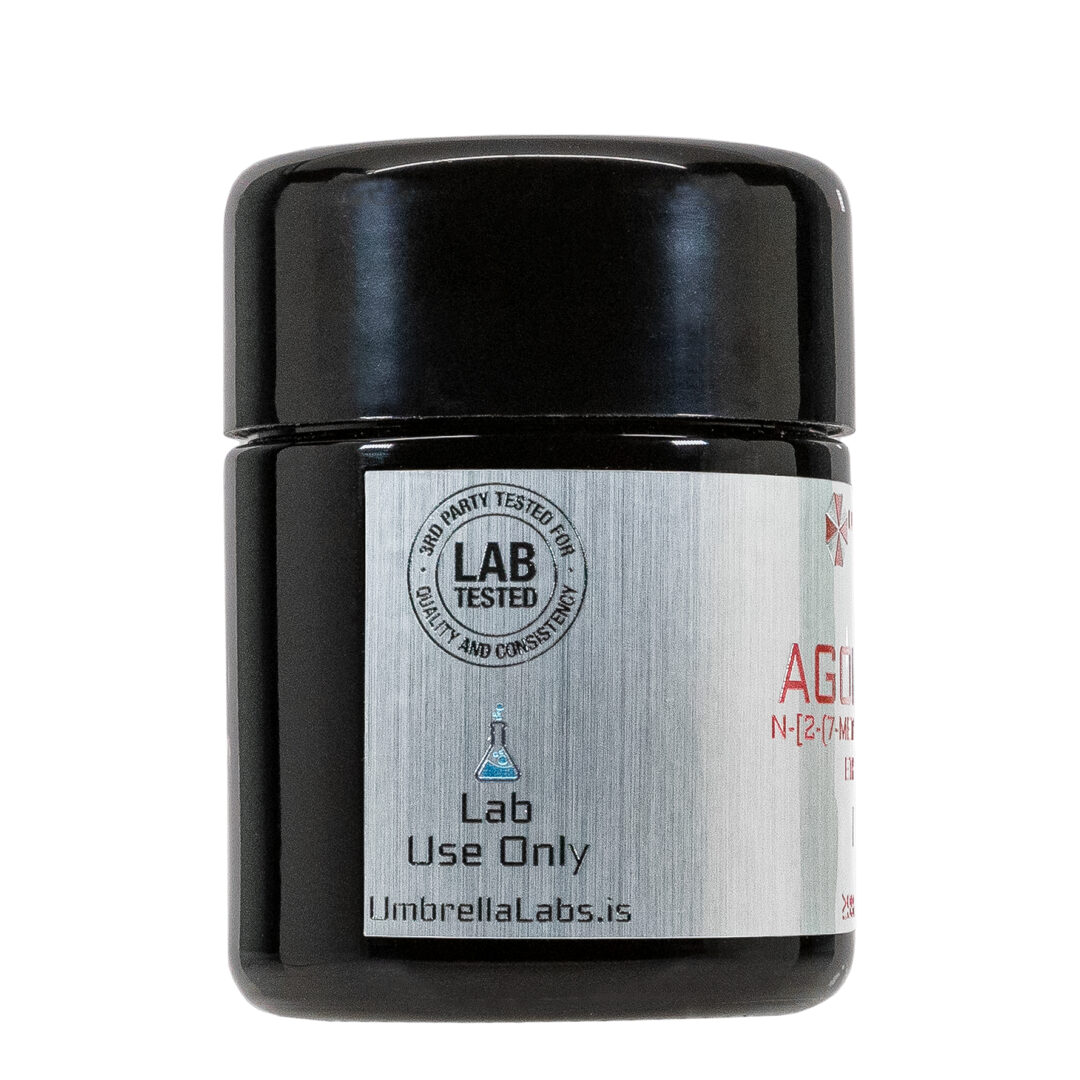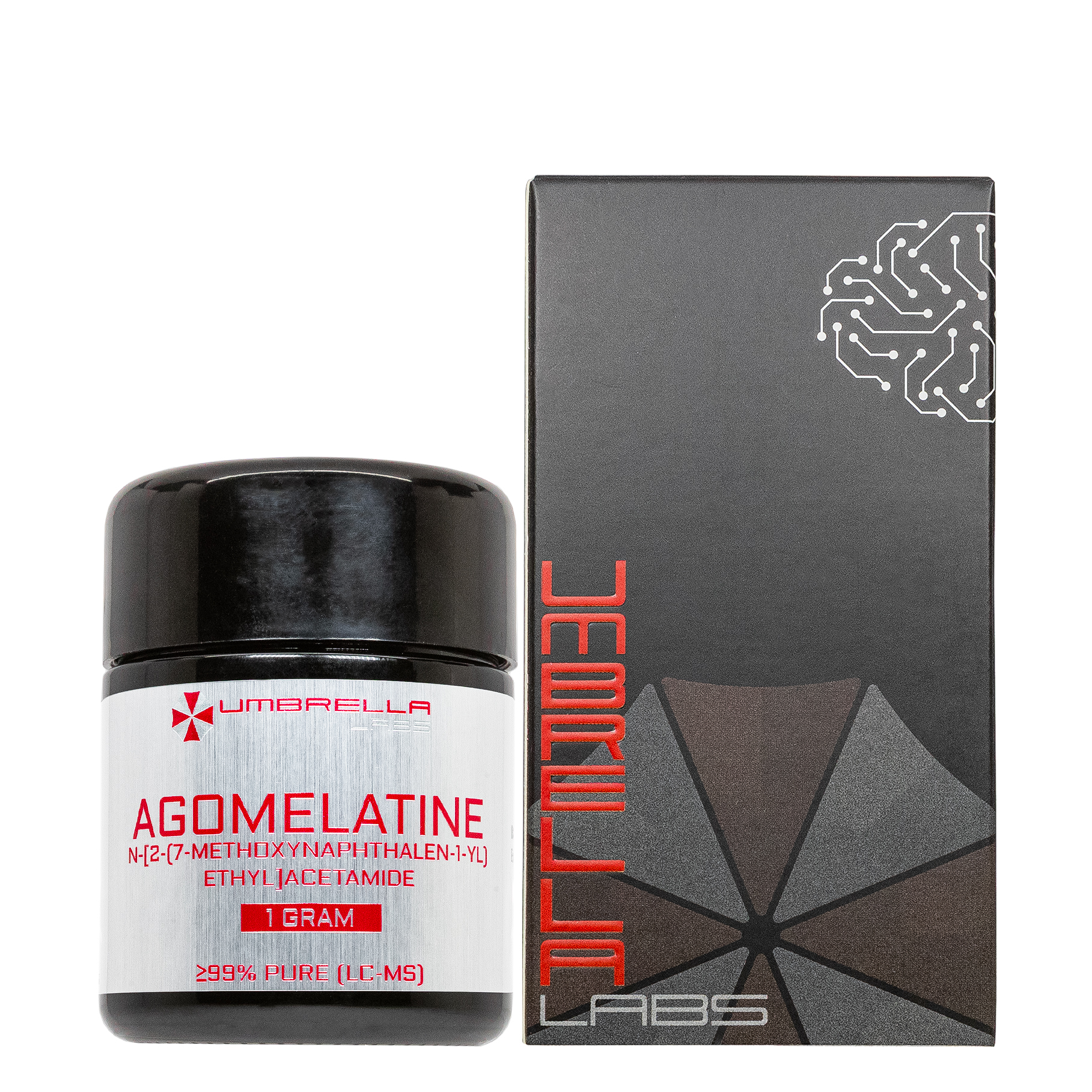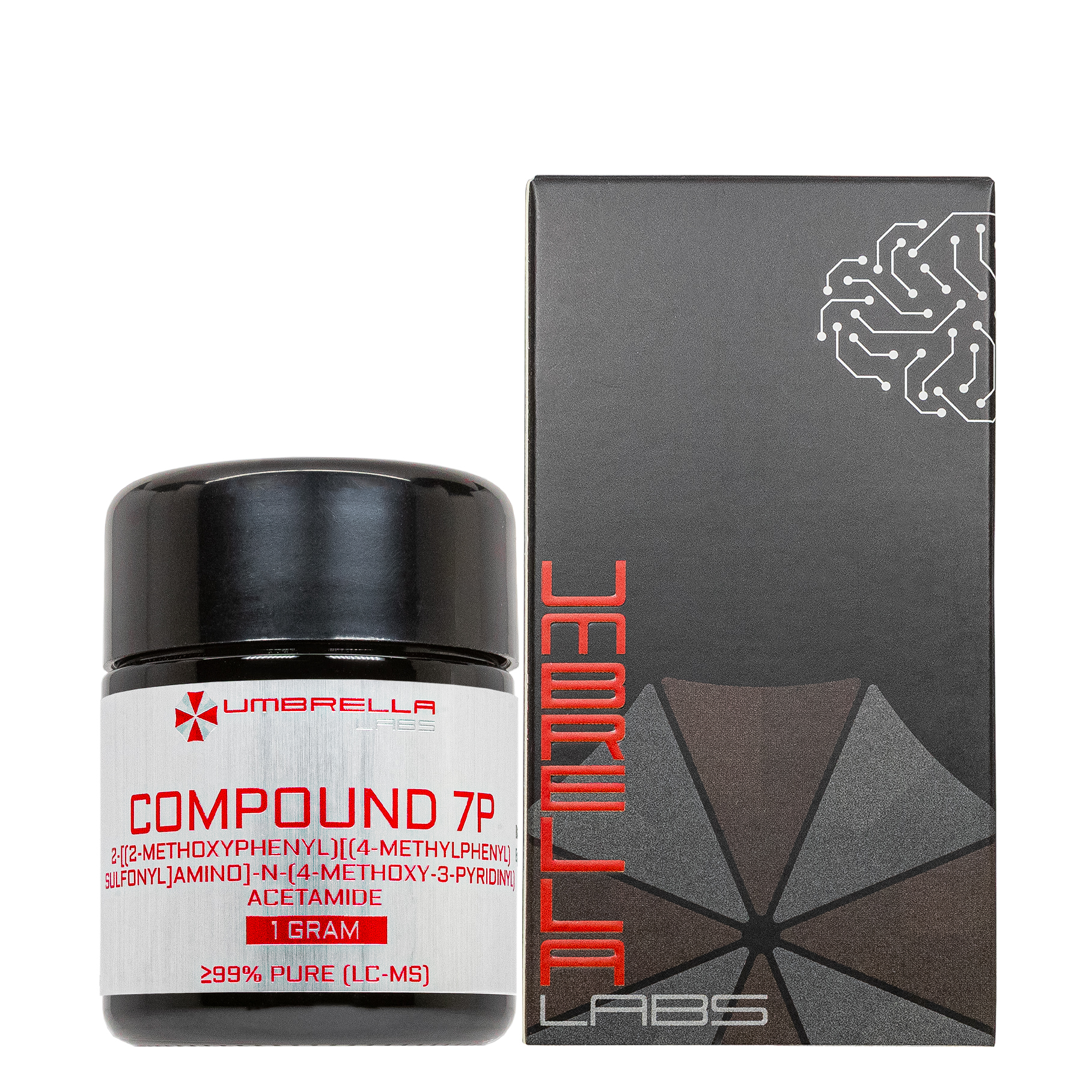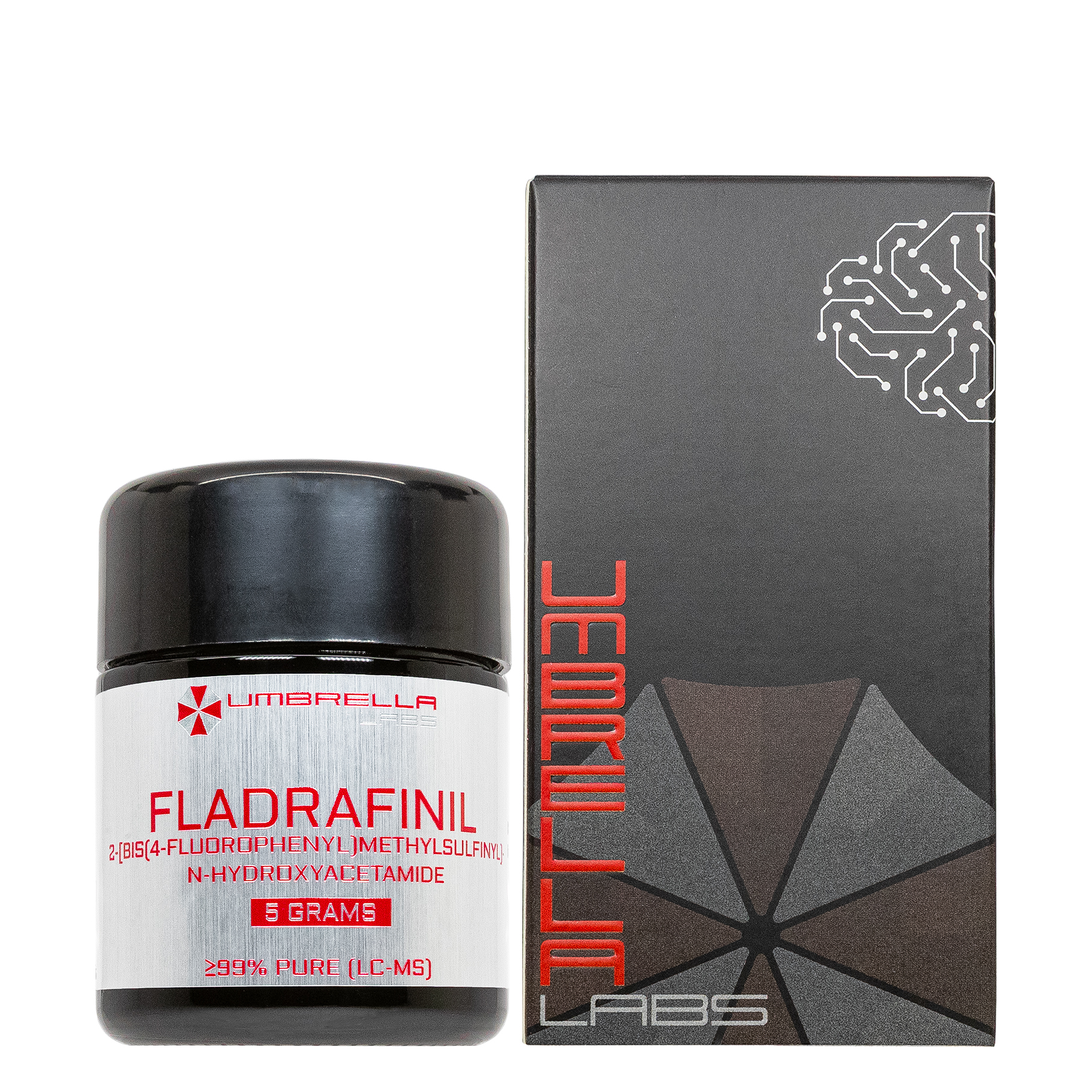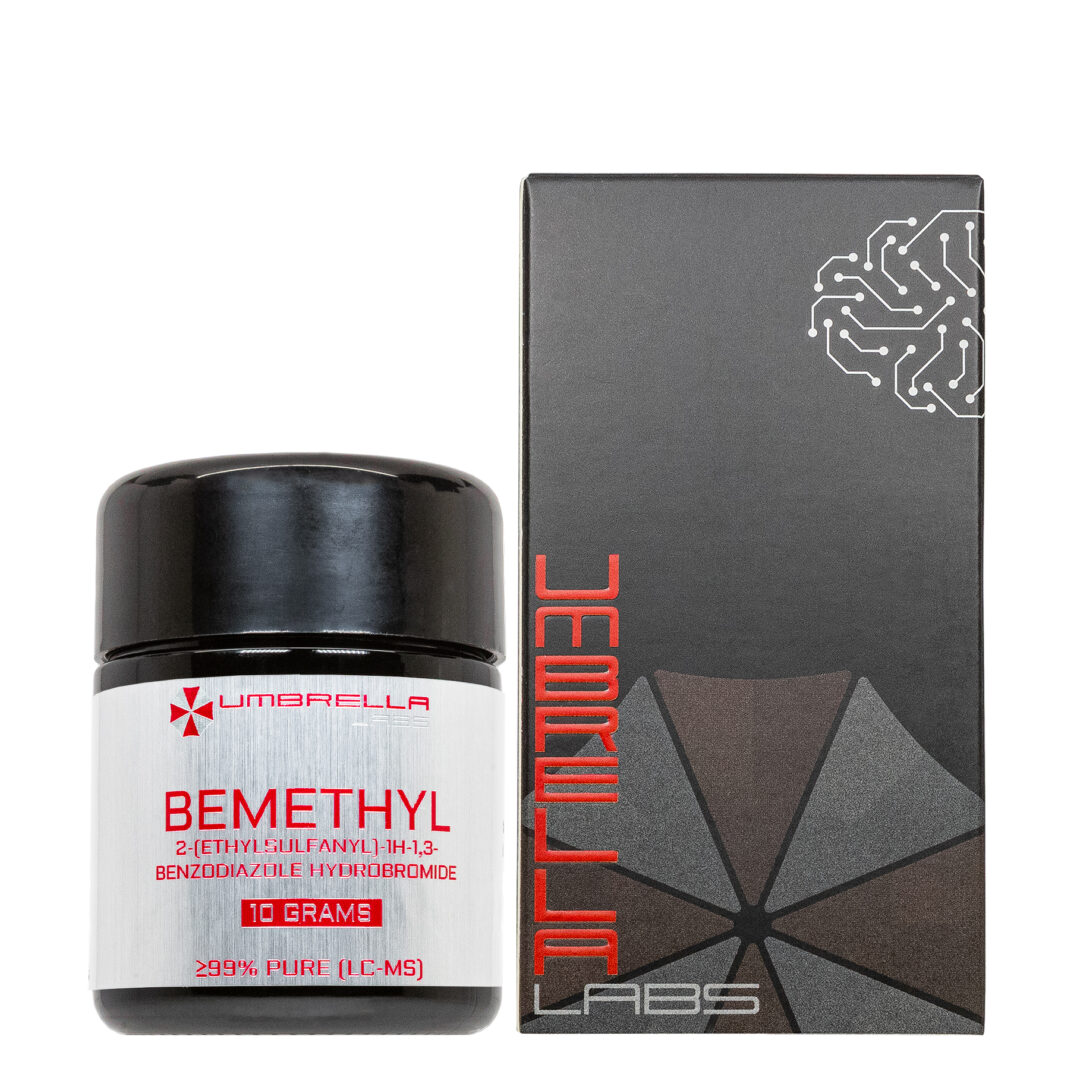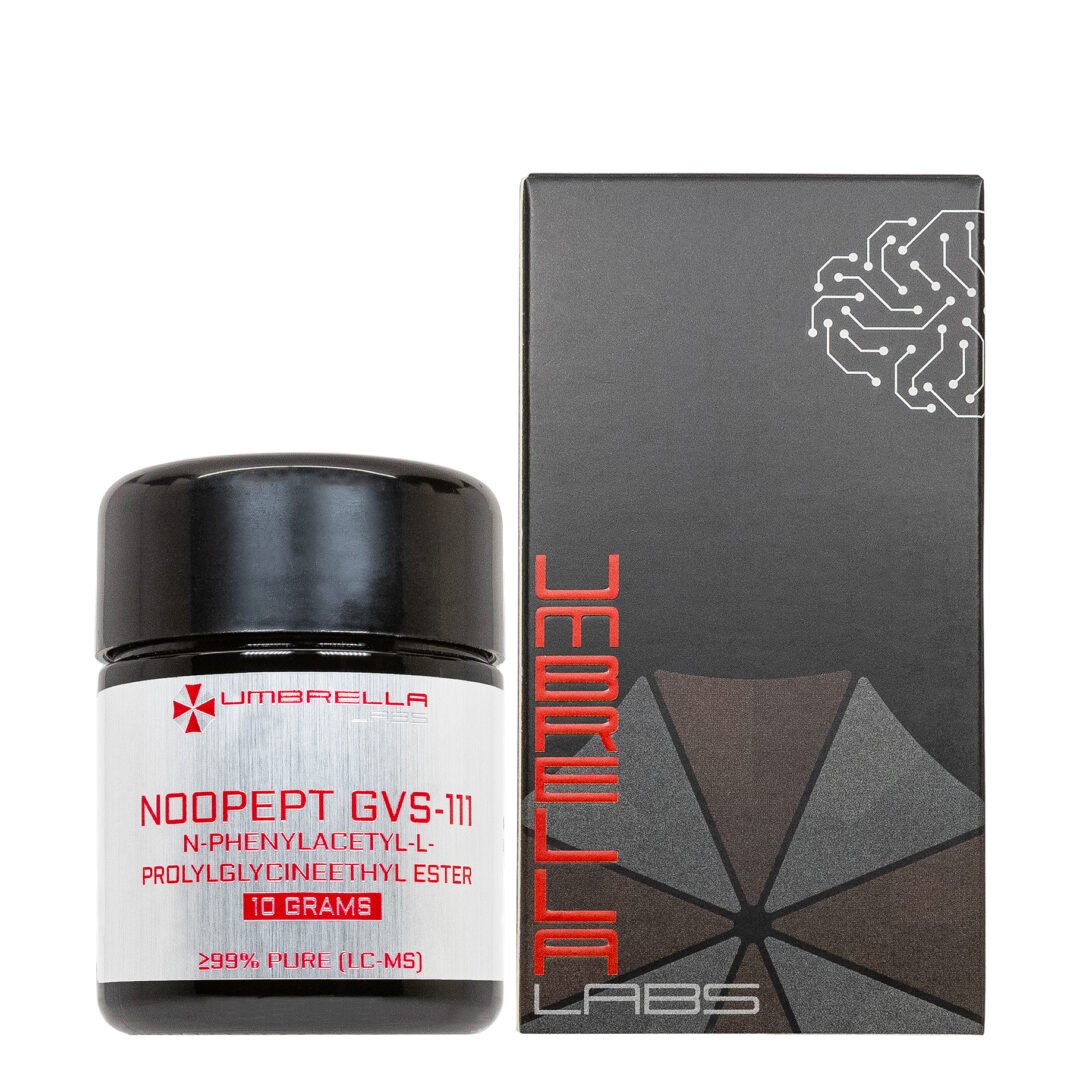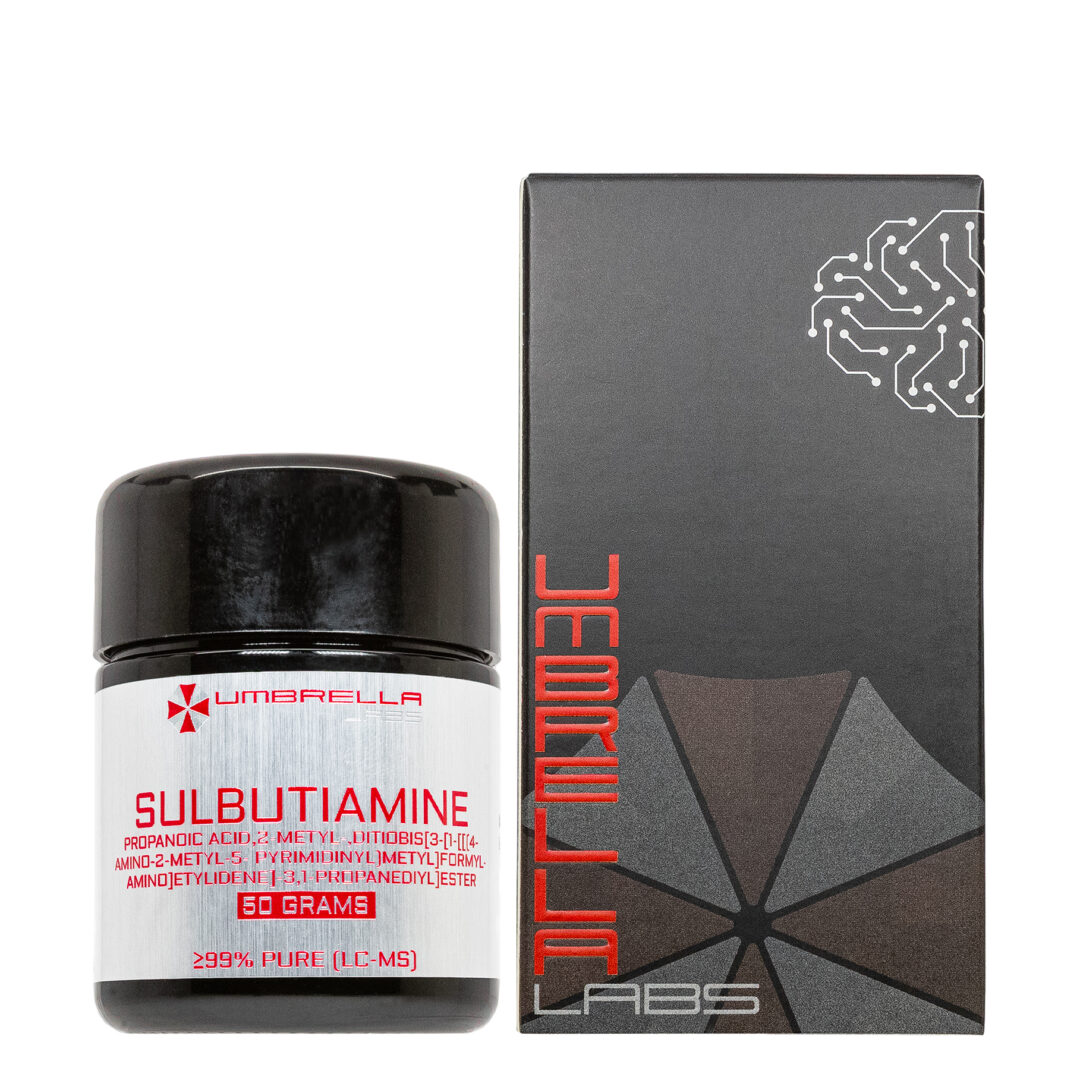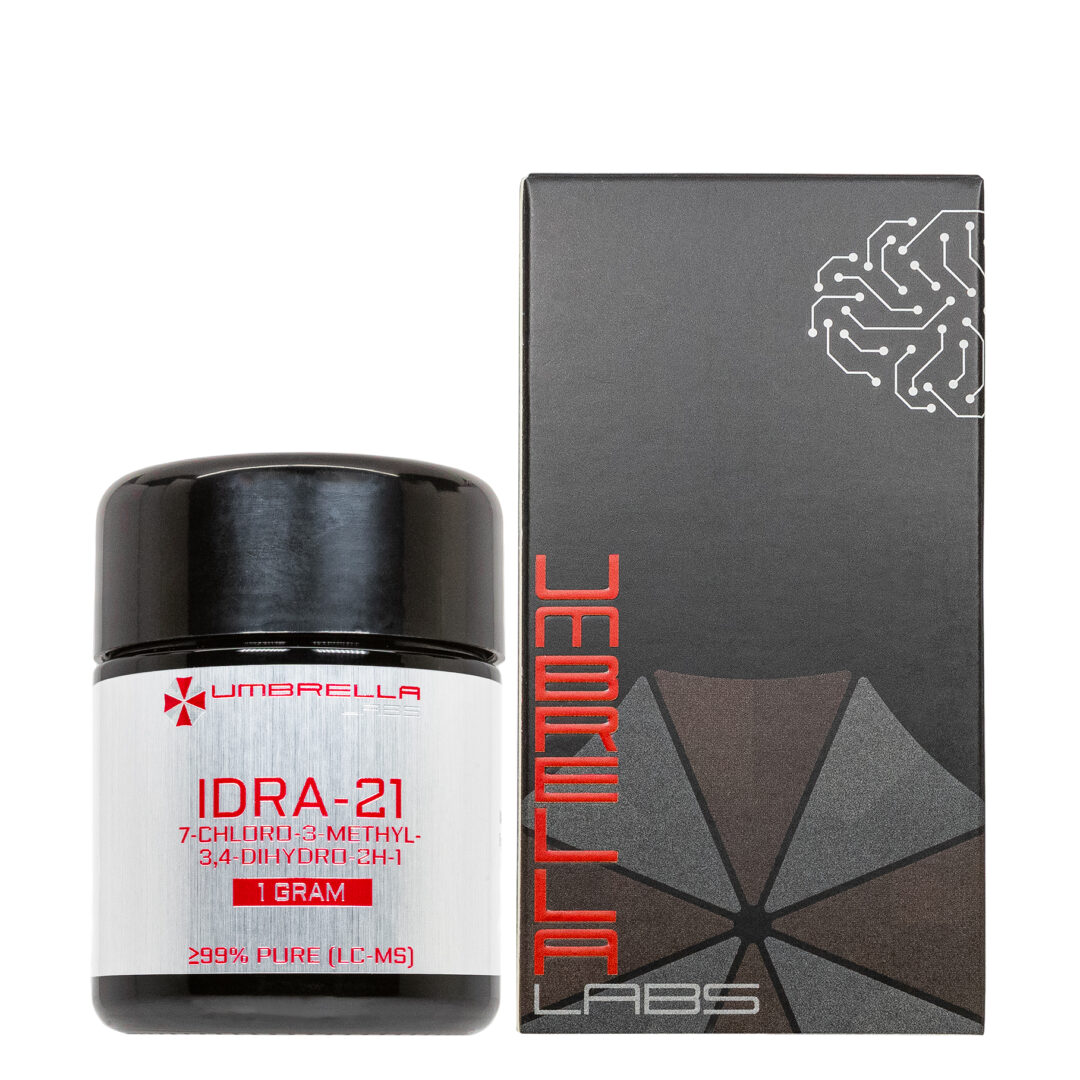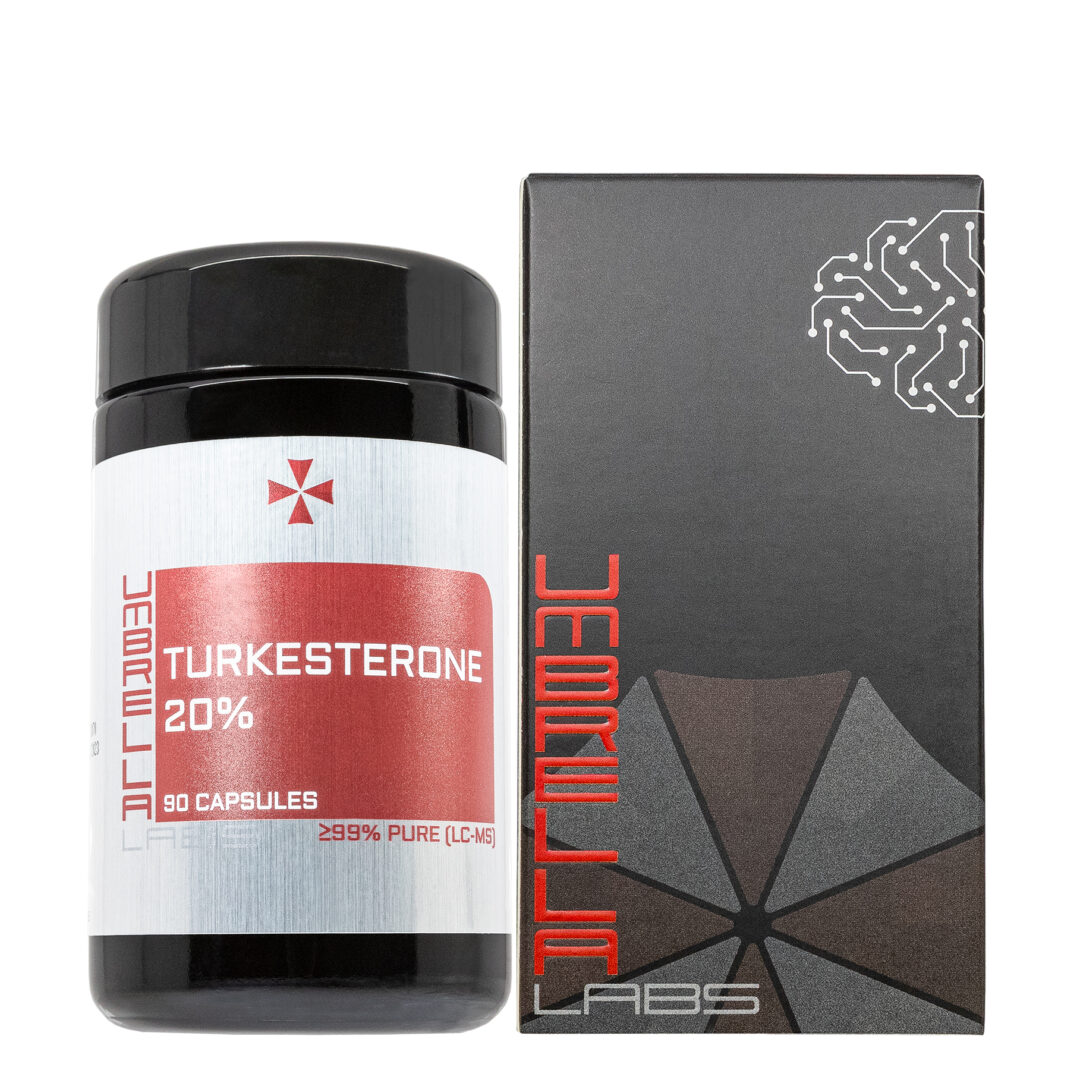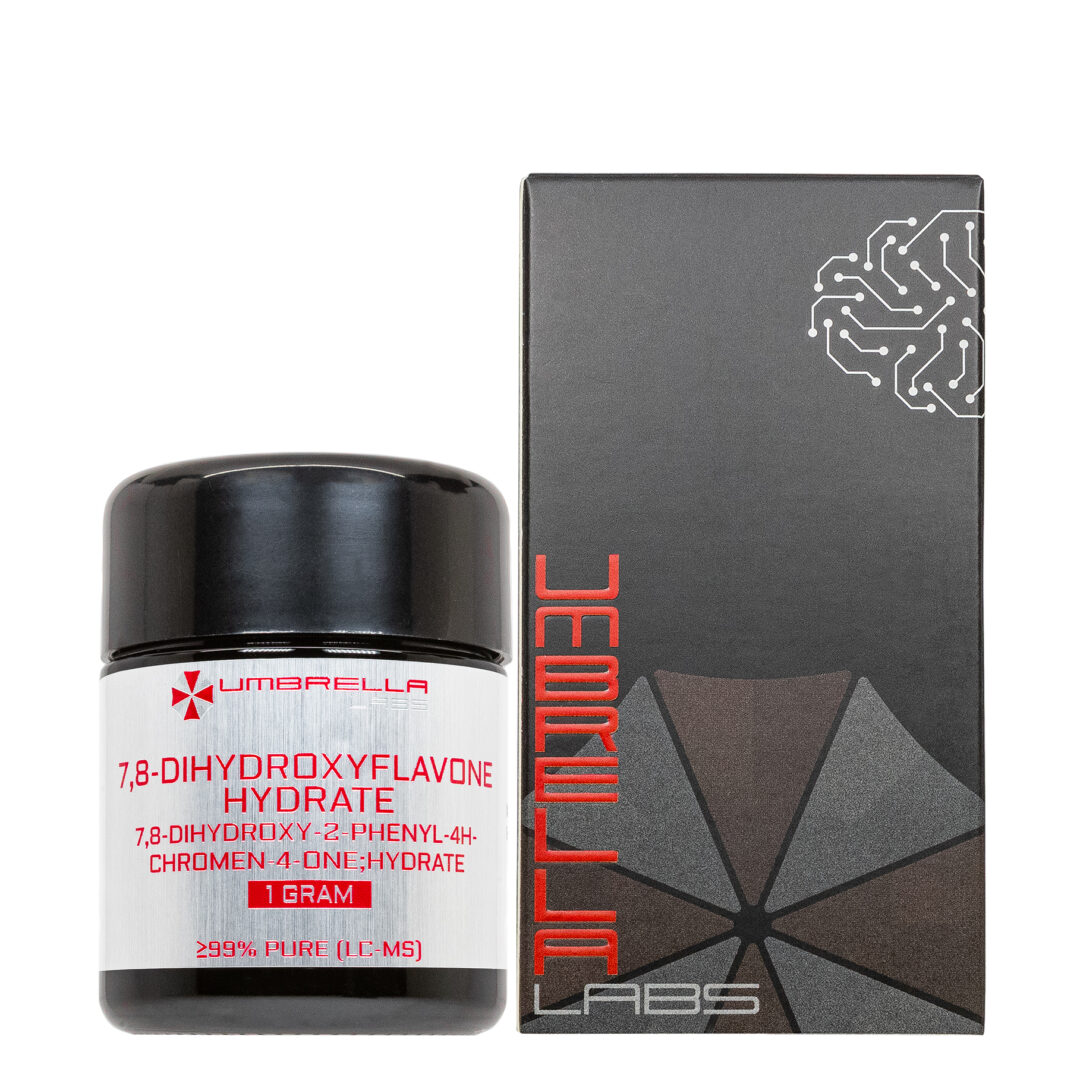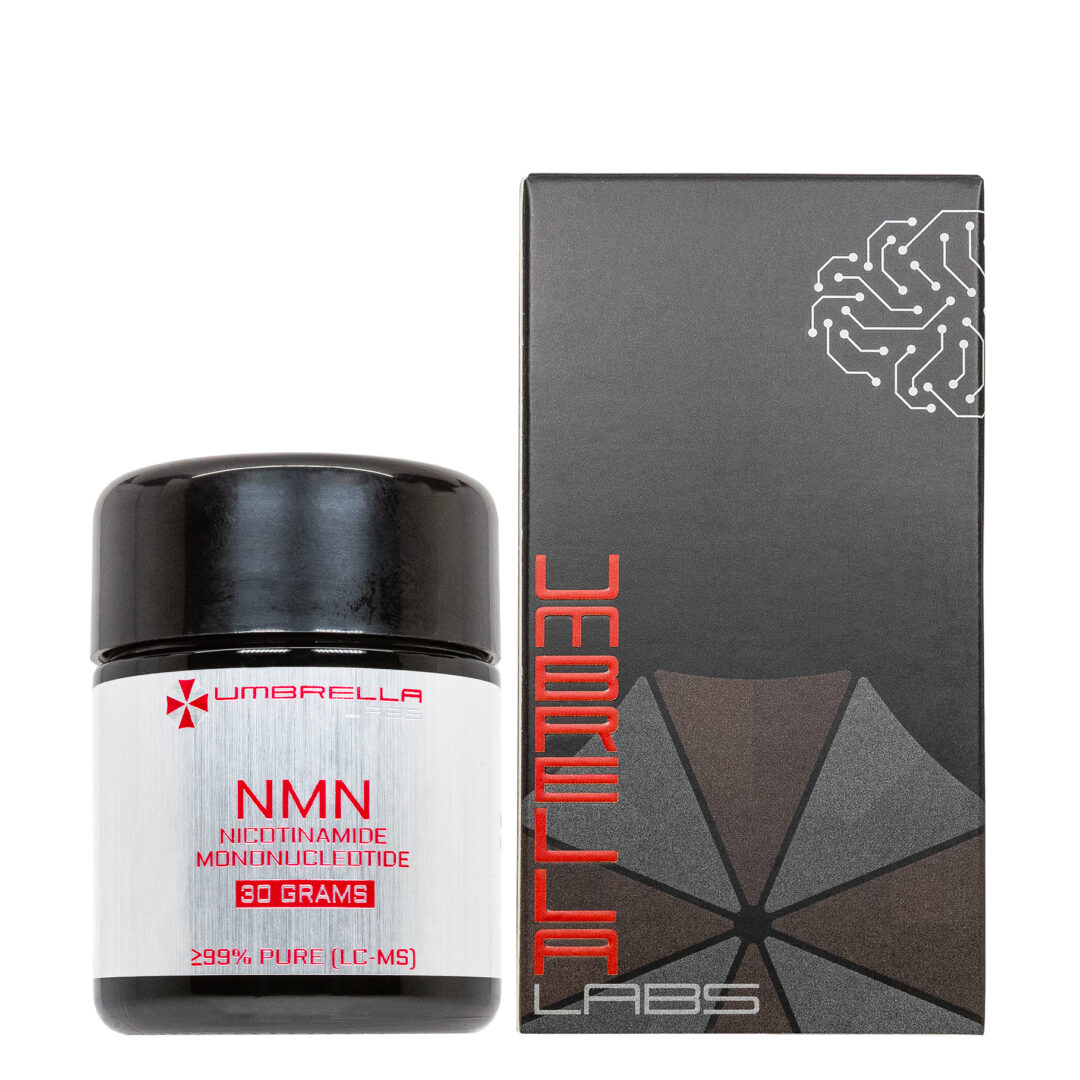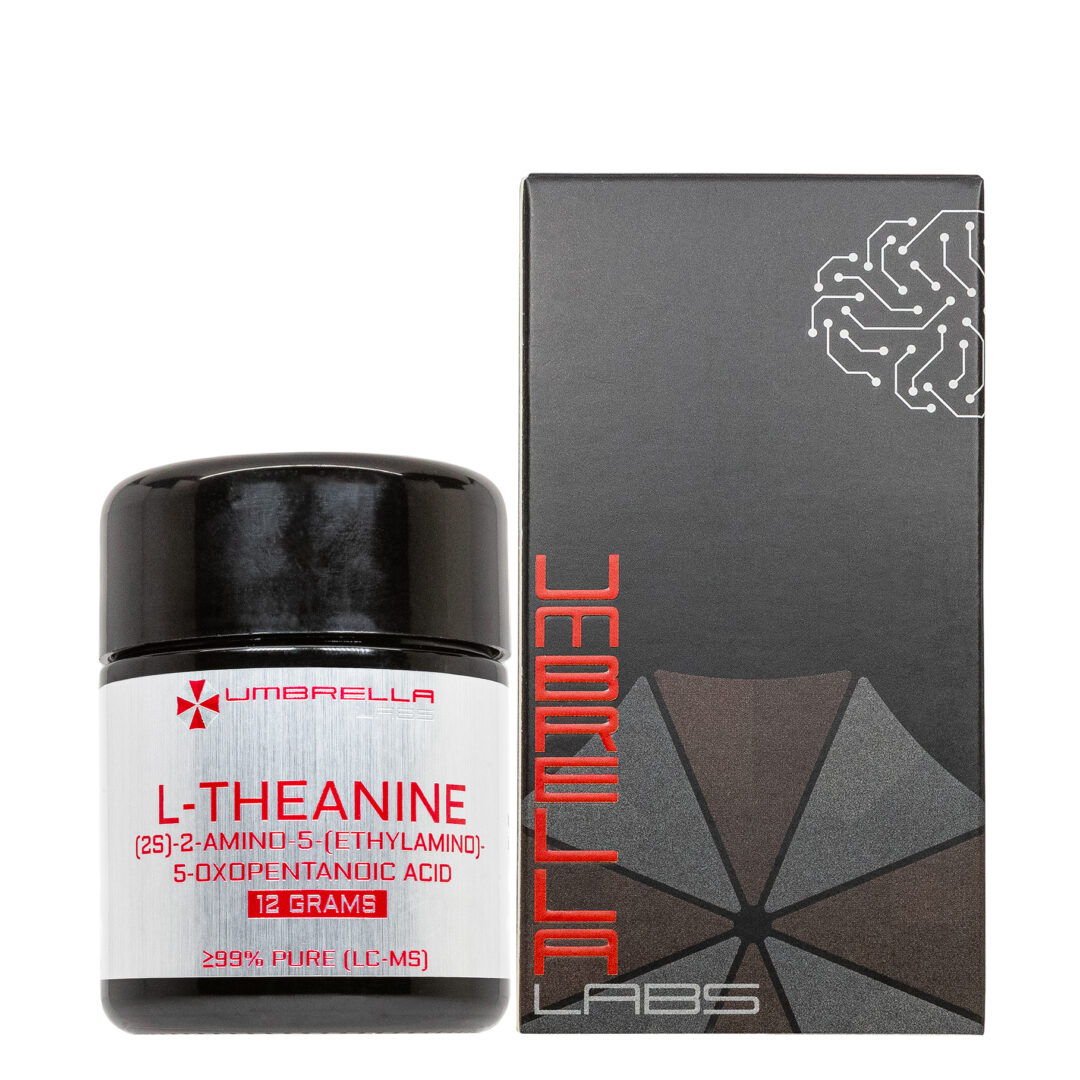AGOMELATINE POWDER (1 GRAM)
$40.99
Agomelatine is sold for laboratory research use only. Terms of sale apply. Not for human consumption, nor medical, veterinary, or household uses. Please familiarize yourself with our Terms & Conditions prior to ordering.
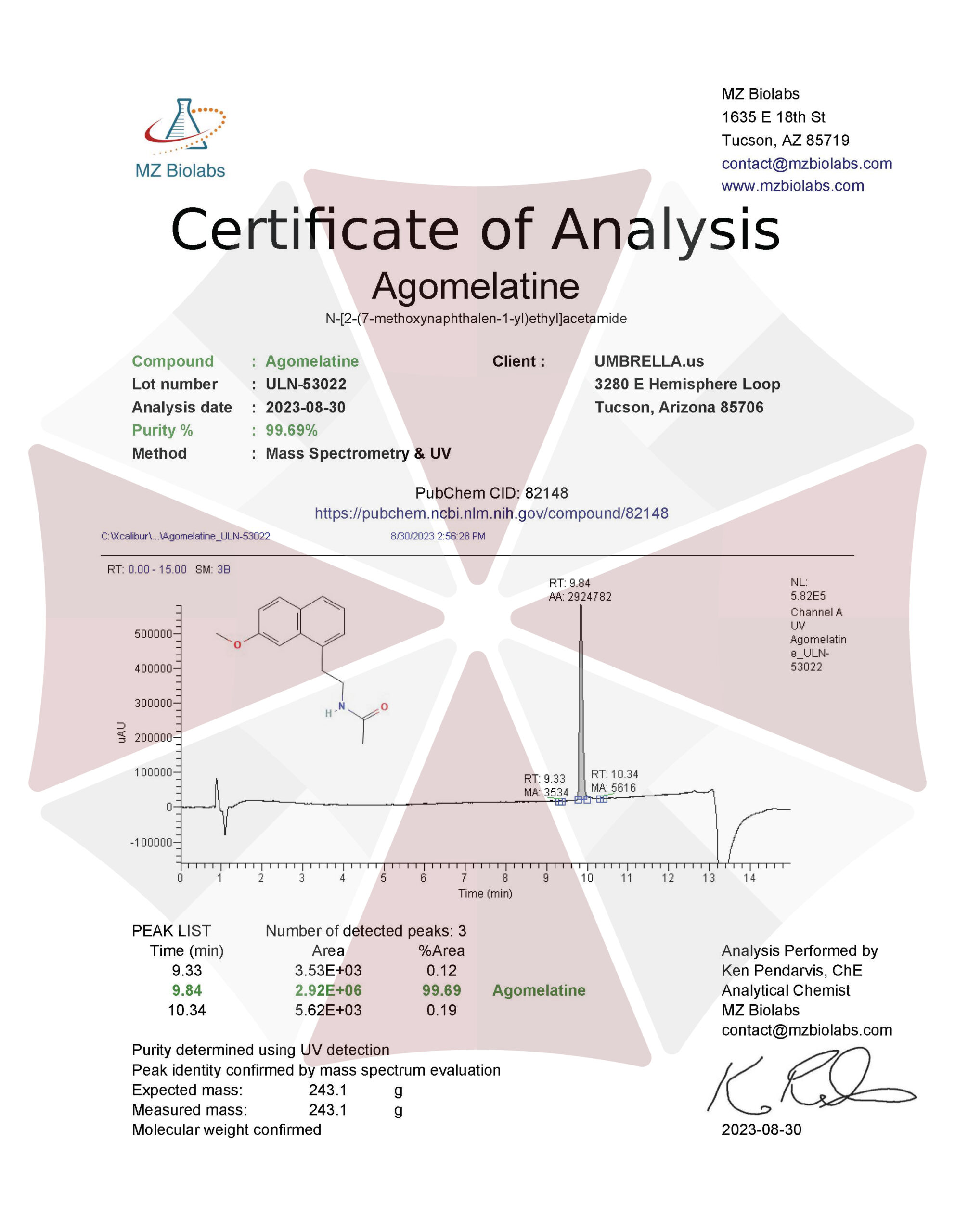
Also Available In:
- Description
- Additional information
Description
Agomelatine Nootropic Powder
![]()
![]()
![]()
![]()
![]()
![]()
![]()
![]()
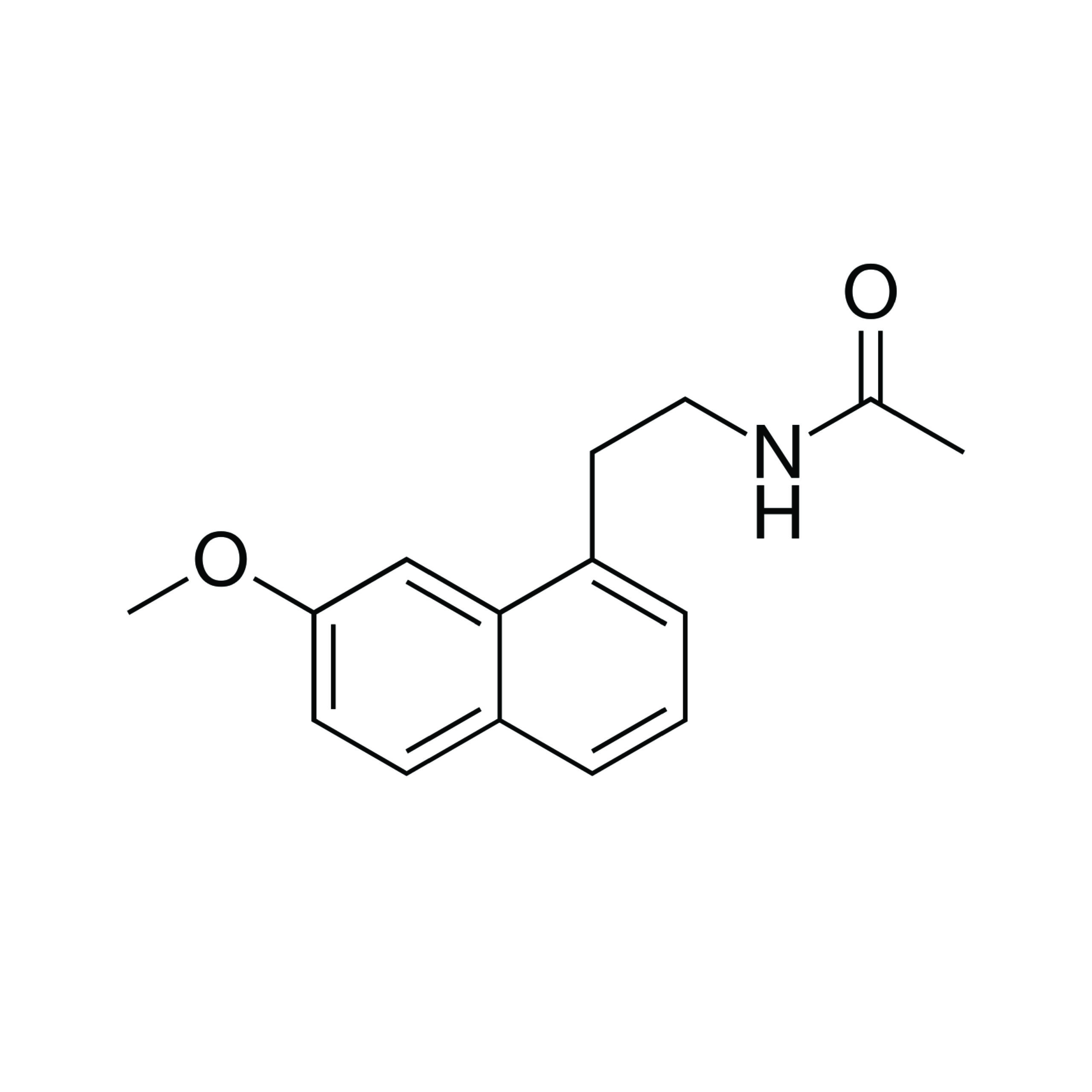
| CAS Number | 138112-76-2 |
| Other Names | Thymanax, Valdoxan, 138112-76-2, N-(2-(7-Methoxynaphthalen-1-yl)ethyl)acetamide, S20098, S-20098, Melitor, AGO-178, AGO 178, CHEMBL10878, UNII-137R1N49AD |
| IUPAC Name | N-[2-(7-methoxynaphthalen-1-yl)ethyl]acetamide |
| Molecular Formula | C₁₅H₁₇NO₂ |
| Molecular Weight | 243.3 |
| Purity | ≥99% Pure (LC-MS) |
| Liquid Availability | |
| Powder Availability | |
| Gel Availability | N/A |
| Storage | Store in a dry, cool, dark place. For best preservation, store at 4°C or colder away from bright light. |
| Terms | All products are for laboratory developmental research USE ONLY. Products are not for human consumption. |
Characteristics of Agomelatine
Agomelatine is a unique antidepressant that has been shown to increase melatonin activity by mimicking the effects of melatonin at the receptor target sites. Melatonin is commonly known as the “sleep hormone” as it affects circadian rhythm and sleep-phase cycles. Important research has concluded that there is a direct link between lack of sleep and depression. That being said, disruption of sleep is considered one of the most prevalent signs of a depressive illness. In animal models, depressed subjects typically exhibit decreases in total sleep time and sleep efficiency, difficulty falling asleep, early wake times, and abnormal instances of rapid eye movement (REM).
Further research solidifies this claim, suggesting that subjects with major depressive order (MDD) or seasonal affective disorder (SAD) have also experienced disruptions in amplitude and rhythm of melatonin secretions as well as circadian rhythm. Because agomelatine has shown promise in treating depression while manipulating melatonin activity, important research is currently being conducted to attempt to understand the mechanism of action of agomelatine (https://pubmed.ncbi.nlm.nih.gov/19454302/).
The compound is considered to be an analog of melatonin due its categorization as an acetamide naphthalene. Research has found that the compound acts as a melatonin agonist with affinity for receptors MT1, MT2, and an antagonist for the 5HT2C (serotonergic) receptor. It’s important to mention that agomelatine acts as a 5HT2C receptor antagonist, considering that activation of this receptor leads to inhibited release of dopamine and norepinephrine. By inhibiting activation of this receptor, agomelatine actually leads to increased levels of norepinephrine and dopamine, explaining its mechanism of action as an antidepressant.
Agomelatine is typically administered orally and is metabolized in the liver by isoenzymes 1A2 and 2C9, as well as cytochrome P450. It’s interesting to note that recent studies have shown that when administering agomelatine in combination with compounds that inhibit the 1A2 isoenzyme pathway, total agomelatine plasma levels increase. Additionally, when compounds that induce activation of the 1A2 isoenzyme platforms are administered, agomelatine plasma levels decrease (https://pubmed.ncbi.nlm.nih.gov/11102739/).
Antidepressant Effects of Agomelatine
Through the use of animal models, researchers have been able to further examine the link between agomelatine’s antidepressant effects and its ability to increase melatonin activity. Because the compound is considered a melatonin agonist, administration of agomelatine typically leads to elicited effects similar to melatonin. For example, studies have found that, like melatonin, agomelatine is able to resynchronize circadian rhythms in animals with induced delayed sleep-phase syndrome. However, unlike melatonin, agomelatine exhibits anxiolytic and antidepressant qualities. Research conducted by Millan et. Al examined the extent of which the anxiolytic effects were expressed in rats. The results reported that when comparing agomelatine to benzodiazepine, clorazepate, and the 5HT2 receptor antagonist, SB243,213, agomelatine yielded the best performance results in tests meant to measure anxiolytic activity.
Many significant studies have found that administration of agomelatine improves performance in terms of measured models of depressions. A study conducted by researchers Bourin et. Al observed the efficacy of agomelatine in treating depression against compounds such as melatonin, fluoxetine, and imipramine. Measuring depression throughout the animal model was based on how the rats performed on a forced swim test (FST). In doses of 4, 16, and 32 mg/kg per day, agomelatine was able to significantly improve FST performance by decreasing immobility duration. This indicates that agomelatine is able to act as an efficient antidepressant in terms of an animal model FST (https://pubmed.ncbi.nlm.nih.gov/15069466/).
A similar study conducted by Norman et. Al assessed the antidepressant effects of agomelatine by measuring depression through locomotor hyperactivity in olfactory bulbectomy rats. Doses of 10 and 50 mg/kg per day of agomelatine were given to male Sprague-Dawley rats over an experimental period of 14 days. Compared to the other compounds administered, both the 10 and 50 mg/kg doses drastically decreased cases of locomotor hyperactivity. This significant reduction in measured behavior supports the claim that agomelatine is an effective antidepressant in this model. It should be noted that administration of melatonin alone led to no significant change in the measurement of either of the previously mentioned models, as it caused no change in the activity of 5HT receptors or the secretion of noradrenaline (https://pubmed.ncbi.nlm.nih.gov/22040921/).
The nootropics sold by Umbrella Labs are sold for laboratory research only. The description above is not medical advice and is for informative purposes only.
Agomelatine is sold for laboratory research use only. Terms of sale apply. Not for human consumption, nor medical, veterinary, or household uses. Please familiarize yourself with our Terms & Conditions prior to ordering.
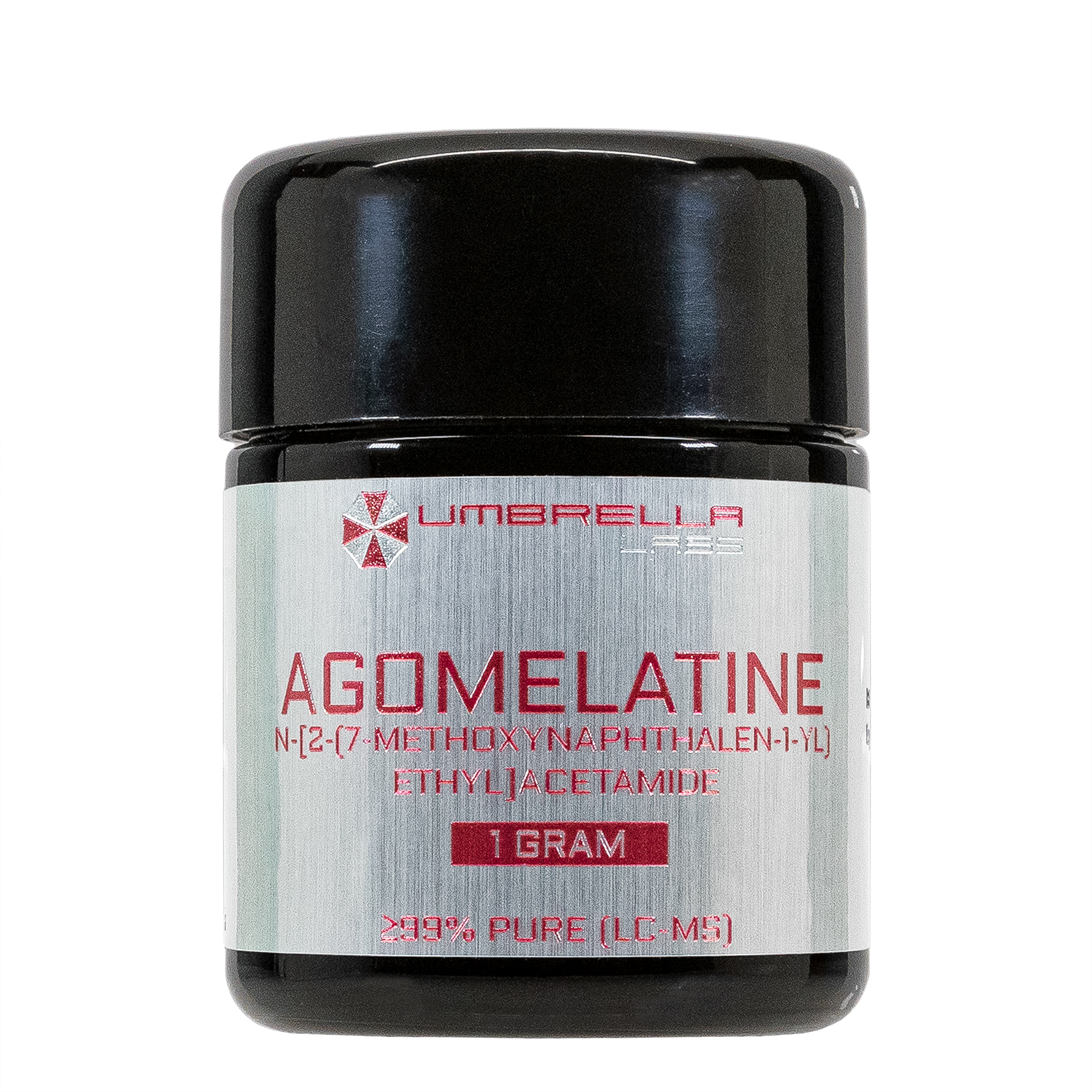
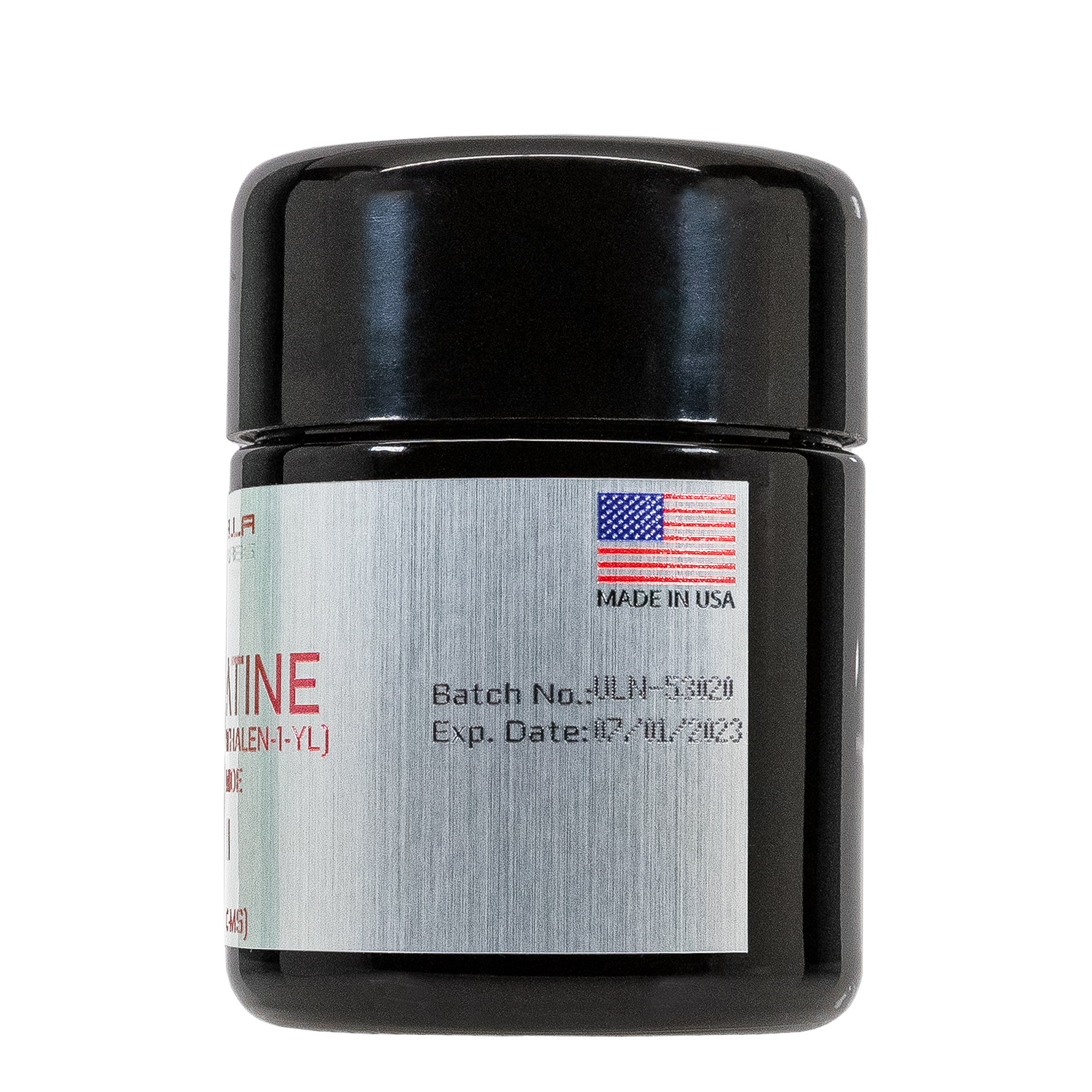
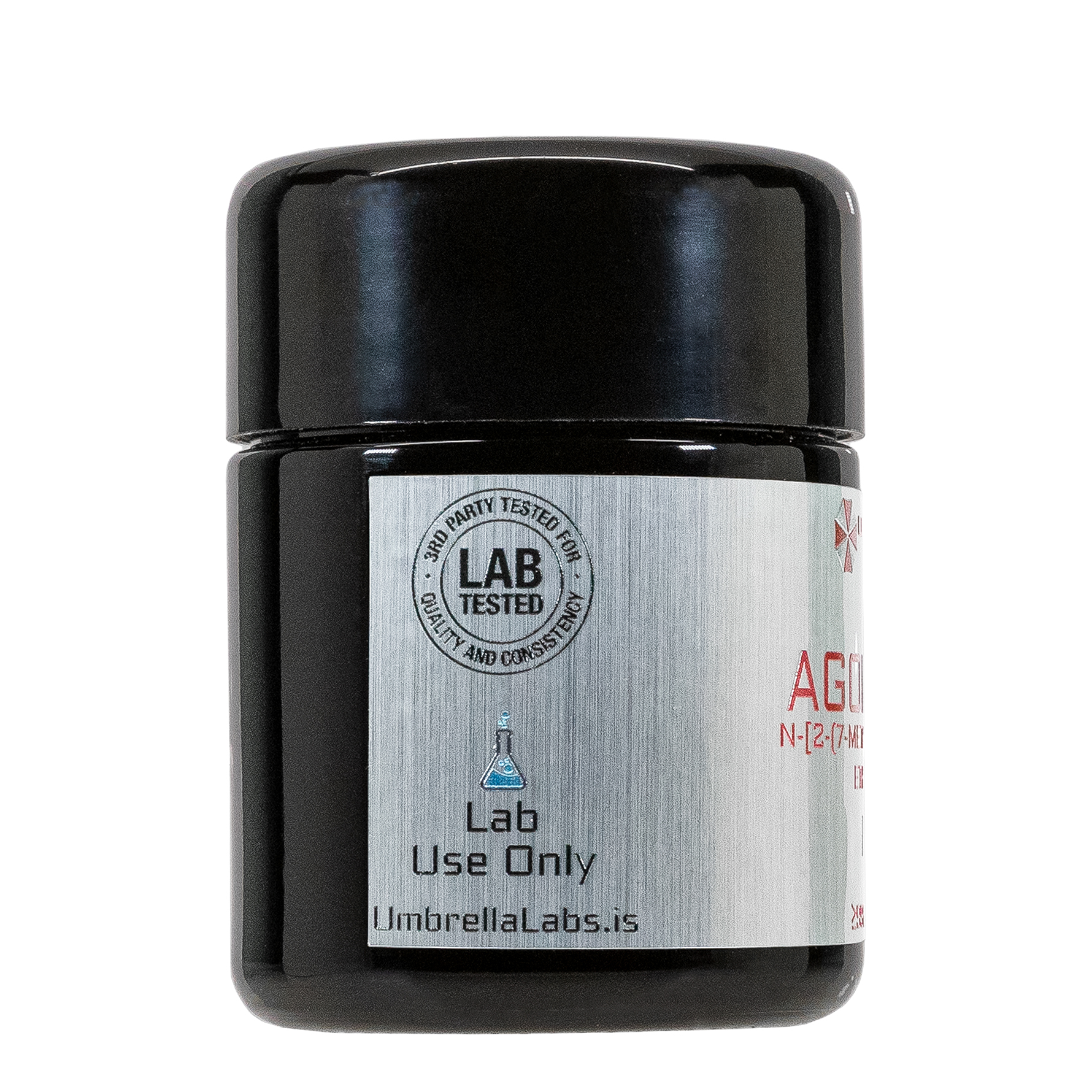

| File Name | View/Download |
| 08-30-2023-Umbrella-Labs-Agomelatine-Certificate-Of-Analysis-COA.pdf |
VIEW CERTIFICATES OF ANALYSIS (COA)
Additional information
| Weight | 1 oz |
|---|---|
| Dimensions | 0.5 × 0.5 × 1 in |
| Options |

